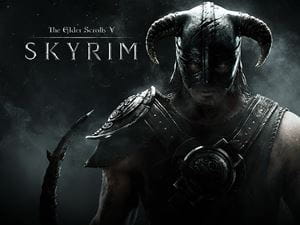
The more I read Revelation, the more convinced I am that the book is there to be never understood. A friend who also studied Theology, but who took different classes, informs me that the option on Revelation involved more art history than biblical studies. You see, the professors too find Revelation impenetrable, so they show PowerPoints about how painters have depicted the Apocalypse instead of touching the infamous book. You’d think that God is trying to prove a point; even if you claim — and this would be high praise indeed — to understand all sixty-five other books of the Bible, Revelation will always be beyond you. Even if you’re a Theology professor.
For some reason, though, it always tends to be the least interpretable ideas in Revelation that are the most hotly contested: the mark of the beast, the timing of the millennium, the identity of the antichrist. All these things are so cryptic that I wonder where even to start making sense of them. As a result, I’ve become gradually comfortable with knowing what I don’t know. There are few things more humbling as a Theology student than trying to read the unreadable. Pretty much all I can glean from this intractable book is the overall narrative of a great contest between good and evil, which ends in the former vanquishing the latter. Maybe this is all we were ever supposed to take from it.
I found my imagination roaming back lately to those bewildering pages of St. John. The occasion was a long-overdue replay through my favourite video game, The Elder Scrolls V: Skyrim. A decade after the title’s release on 11th November 2011 (11/11/11), what better time to write this article than to coincide with Skyrim’s tenth anniversary? If you haven’t yet experienced it, Skyrim, in a nutshell far too small to contain it, is a fantasy quest with a civil war backstory woven throughout. Were you to cross The Hobbit with Game of Thrones, you would have something not unlike Skyrim. Something, no doubt, with a biblical feel. But it’s the main villain in Skyrim who looks like a monster straight out of the Bible’s final prophecy: a world-eating dragon called Alduin.
Every acclaimed fantasy has a memorable villain. And Skyrim is no exception. Alduin’s entire purpose for existing, his raison d’être, is to destroy the fictional continent of Tamriel. His plan is to fly around the Nordic province of Skyrim resurrecting an army of lesser dragons, who will do his malicious bidding. Nothing too serious, then. As the Dragonborn, a legendary hero, the player tries to stop Alduin. He takes out the dragons Alduin brings back from the dead and, ultimately, he sends Alduin himself back to the circle of hell that he came from. It’s a struggle between a saving light and a ravaging darkness, the sort of thing to evoke those cosmic battles of St. John’s Revelation.
Chapter 12 of John’s vision describes an opponent similar to the Dragonborn’s foe; ‘and behold a great red dragon, having seven heads and ten horns, and seven crowns upon his heads’ (v. 3b). Now, call it an incurious attitude but I find speculation on what all these numbers represent rather idle and inconclusive. Revelation, from where I’m standing, has more barrels of red herring than a Carrickfergus chippy. We’re better off reading Revelation through a soft-focus lens. That is, not for detail but for the rough contours of a general message. By giving his dragon seven heads and as many crowns, John is heightening the drama by setting up a frightening enemy. The numbers are simply there to assist our imagination.
The story of Skyrim is, from a distance, the narrative of Revelation. Both depict a clash over the fate of mankind, in which we mortals are delivered from an existential threat. Revelation, in turn, pretty well summarises the whole of the Bible. Compelling description is another shared attribute. Skyrim’s Alduin, though fairly intimidating, is not as extravagantly terrifying as the dragon of John’s prophetic eye. He’s only got one head, for a start, albeit it’s a fire-breathing one. And rather than blood-red, Alduin’s armour of scales is black as the grave. All these fearsome traits achieve the same end as the features of John’s dragon. That is, to sketch out a herculean enemy. This will render the hero’s victory, when it arrives, all the more astounding.
Adding to the trepidation that simple description creates are the reputed actions of each dragon. This is especially the case with Revelation; John’s creature is an agent of sweeping chaos. ‘And his tail drew the third part of the stars of heaven, and did cast them to the earth’ (12:4a). Outside of raining down heavenly bodies from the sky, the dragon also has a sinister obsession with stalking one particular woman. Usually taken to be the Virgin Mary, the dragon watches her give birth so he can try to devour her son (v. 4b). Blood-thirst and sexual creepiness pervade this disturbing image. But regardless of intent, a crimson-coloured, multi-headed lizard is hardly a reassuring presence to a woman in labour.
And a dragon bent on laying everything to waste receives no less icy a reception in Skyrim’s Viking-style towns and cities. Before the events of Skyrim, and thus forming part of its backstory, some Nordic heroes confronted Alduin when he last oppressed humankind. Instead of defeating Alduin once and for all, however, the heroes only managed to send him forward in time to the year, coincidentally enough, in which the game takes place. It wasn’t a final victory but a temporary solution; the player character picks up where the heroes left off. Even if it means pursuing Alduin to the world of the dead (spoiler: it does), no feat of heroism is too great for the Dragonborn.
Another biblical parallel jumps out. Revelation 20 sees an angel incarcerate the dragon, ‘and cast him into the bottomless pit, and shut him up, and set a seal upon him,’ writes the Divine, ‘that he should deceive the nations no more, till the thousand years should be fulfilled: and after that he must be loosed a little season’ (v. 3). As in Skyrim, the dragon’s initial fall doesn’t endure. Like Alduin, banished only for a few hundred years before emerging again, the dragon in Revelation is a stubborn beast. It stays under lock and key for a millennium before getting out another while. A lasting victory is not yet at hand; our dragon lives to die another day.
But in every story with a sense of justice, the villain has to pay for their crimes. Wrongdoers, be they never so powerful, cannot evade suitable punishment forever. Skyrim is no different; Alduin will be held accountable for all that he has inflicted on humankind. After several run-ins with Alduin, each resulting in the dragon’s escape, the Dragonborn climatically chases him to Sovngarde: the game’s take on Valhalla. Sure enough, ‘the World Eater’ awaits the player. Then, assisted by the heroes who transported Alduin through time, the Dragonborn takes down the monster for good. And so, the dragon threat is abated.
As it is in Skyrim, a dragon overcome and able no longer to do harm, so it is in Revelation. What even the greatest heroes from olden days were unable to do, there comes a greater hero to complete. ‘And the devil that deceived them was cast into the lake of fire and brimstone,’ the devil being the dragon, ‘and shall be tormented day and night for ever and ever’ (20:10). It is God, the hero triumphant, who prevails over Satan and throws him into hell. The dragon is where he belongs, never to get free (v. 9). Good has carried the day.
But why, as we draw conclusions, compare a video game and a biblical book? Let’s build a rationale for what we’ve been doing using Plato’s cave allegory (Republic 514a-521b), ‘a gift that keeps on giving,’ as Dan Koch rightly terms it. Without rehearsing the entire analogy here, Skyrim is like the shadow puppetry in Plato’s cave. A shadow of a horse, for example. is precisely that: a shadow. It isn’t a real horse. In the same way, the Dragonborn isn’t a real saviour but a representation of one. Plato desires his audience to turn from the world of representation, which is where the search for knowledge starts, and learn to see reality (518c). And so, playing Skyrim is all very well but its true purpose, for the Christian, is to lead us into contemplation of Jesus crucified and risen, who gives heroism its true form.
In the Irish Presbyterian Code there is a wonderful phrase, ‘individual Christians are not to set their reason above the Word of God, or to refuse light from any quarter’ (2.11). Perhaps even an M-rated role-playing game from ten years ago can illumine the Christian’s path towards God. After all, we need something to set us on the way. And if we find ourselves enraptured by the Dragonborn’s deeds of daring, then how much more captivating is the true Christ who makes all things new? So fire up your console. Dive back into the land of Skyrim. Come away with awe for the Lord.
11/11/2021 12:28:41 AM





